Johannes Brahms
Capriccio, Op. 76, No. 1
Manuscript, 1871
Gift of S. Ellsworth Grumman
Gilmore Music Library
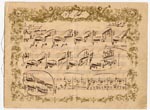 |
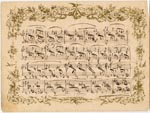 |
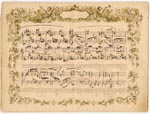 |
||||
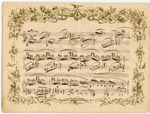 |
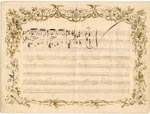 |
|||||
|
One such dispute occurred in the late 1860s, and Brahms’s gift of the manuscript displayed here may have been part of their reconciliation. It is written on paper with a printed decorative border, and bears the inscription “Cl. Sch.” as well as the date “12. Sept. 71.” September 12, 1871 was the 31st anniversary of Clara’s marriage, and September 13 was her 52nd birthday. For most of the decade, the piece seems to have been known only to her, but in 1879, Brahms published a revised version, without a dedication and now bearing the title “Capriccio,” as the first in a set of Klavierstücke, Op. 76. Clara, who may have had proprietary feelings about the original, complained that the new version was marred by hidden parallel octaves. This manuscript formerly belonged to S. Ellsworth Grumman (1891–1975). Grumman (Yale Class of 1913, M.A., 1918) taught piano at the Yale School of Music from 1919 to 1960. He donated the manuscript to the library in 1961. According to Paul Berry (Yale Ph. D., 2007), this piece is closely related to the song “Alte Liebe,” Op. 72, no. 1, which Brahms composed in 1876. In a remarkable coincidence, the song manuscript is now part of the Frederick Koch Collection at the Beinecke Rare Book and Manuscript Library, just across the street from the Gilmore Music Library. |
||||||
